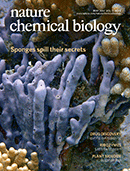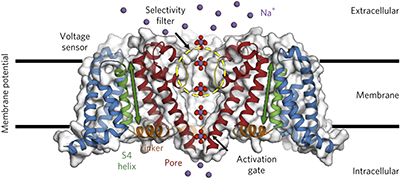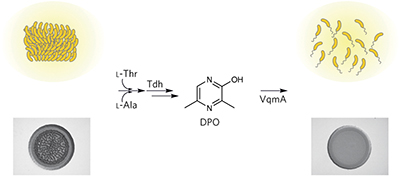Advertisement |
 |
Focus on the origin of life
Nature Chemistry presents a Focus which explores the origins of RNA and its role in contemporary biological systems. The collection of articles reveal new insights into what early Earth might have looked like and how life first emerged.
Read the Focus |  | | |
 |
 |
TABLE OF CONTENTS
|
May 2017 Volume 13, Issue 5 |
 |  |  |
 |  Research Highlights Research Highlights
 News and Views News and Views
 Review Review
 Brief Communications Brief Communications
 Articles Articles
| |
 |
|
 |
 |
| Advertisement |
 |
| |
 |
| |
Research Highlights |  Top Top |
 |
 |
 |
Optogenetics: Lighting up kinases | Bacterial Membranes: Tear down this wall | Intrinsic Disorder: Fuzzy fast feedback | Anti-Bacterials: Out-SMARting drug resistance
|
News and Views |  Top Top |
 |
 |
 |
| |
 |
Review |  Top Top |
 |
 |
 |
The chemical basis for electrical signaling pp455 - 463
William A Catterall, Goragot Wisedchaisri and Ning Zheng
doi:10.1038/nchembio.2353

A highlight of the knowledge derived in large part from structural work on physical motions and chemical interactions involved in voltage sensing, pore opening, ion conductance and selectivity, and voltage-dependent inactivation mechanisms of the voltage-gated channels NaV and CaV.
|
|
|
 |
Brief Communications |  Top Top |
 |
 |
 |
A fully automated flow-based approach for accelerated peptide synthesis pp464 - 466
Alexander J Mijalis, Dale A Thomas III, Mark D Simon, Andrea Adamo, Ryan Beaumont et al.
doi:10.1038/nchembio.2318

An automated method for solid-phase polypeptide synthesis capitalizes on rapid amide bond formation to enable the production of multiple traditionally difficult-to-synthesize sequences with both high yield and high purity.
|
|
|
 |
 |
 |
|
 |
| Advertisement |
 |
Springer Nature offers a free open access funding support service to enable authors to discover and apply for article processing charge funding available to them.
Visit our website for further advice on the funding options available, and guidance in approaching funders and institutions, or email openaccess@nature.com for more information. |  | | |
 |
| |
Articles |  Top Top |
 |
 |
 |
|
 |
 |
 |
|
 |
 |
 |
|
 |
 |
 |
|
 |
 |
 |
|
 |
 |
 |
|
 |
 |
 |
|
 |
 |
 |
|
 |
 |
 |
|
 |
 |
 |
|
 |
 |
 |
|
 |
 |
 |
A Vibrio cholerae autoinducer-receptor pair that controls biofilm formation pp551 - 557
Kai Papenfort, Justin E Silpe, Kelsey R Schramma, Jian-Ping Cong, Mohammad R Seyedsayamdost et al.
doi:10.1038/nchembio.2336

A new autoinducer-receptor pair, 3,5-dimethylpyrazin-2-ol (DPO)-VqmA, acts in parallel to canonical Vibrio cholerae quorum-sensing pathways. Downstream of VqmA is the small RNA target VqmR, which, like DPO, represses genes required for biofilm formation and toxin production.
Chemical compounds
See also: News and Views by Shi & Bode
|
|
|
 |
 |  |  |  |  |  | Natureevents is a fully searchable, multi-disciplinary database designed to maximise exposure for events organisers. The contents of the Natureevents Directory are now live. The digital version is available here.
Find the latest scientific conferences, courses, meetings and symposia on natureevents.com. For event advertising opportunities across the Nature Publishing Group portfolio please contact natureevents@nature.com |  |  |  |  |  |
|
 |


No comments:
Post a Comment